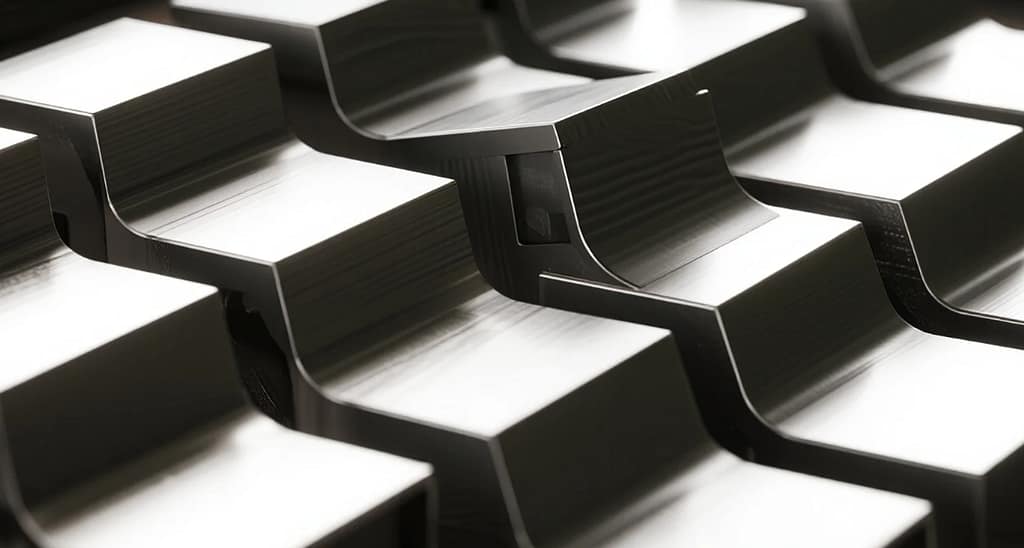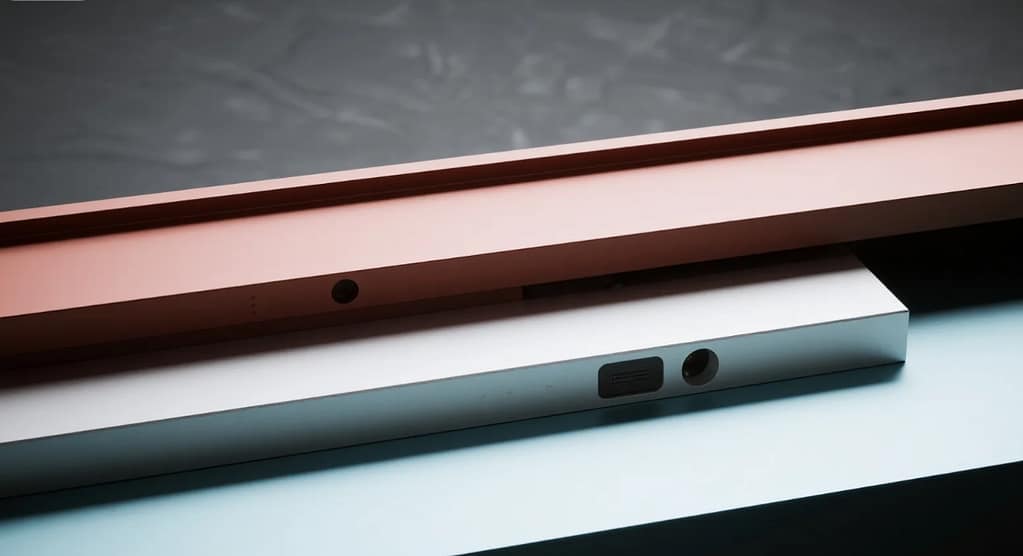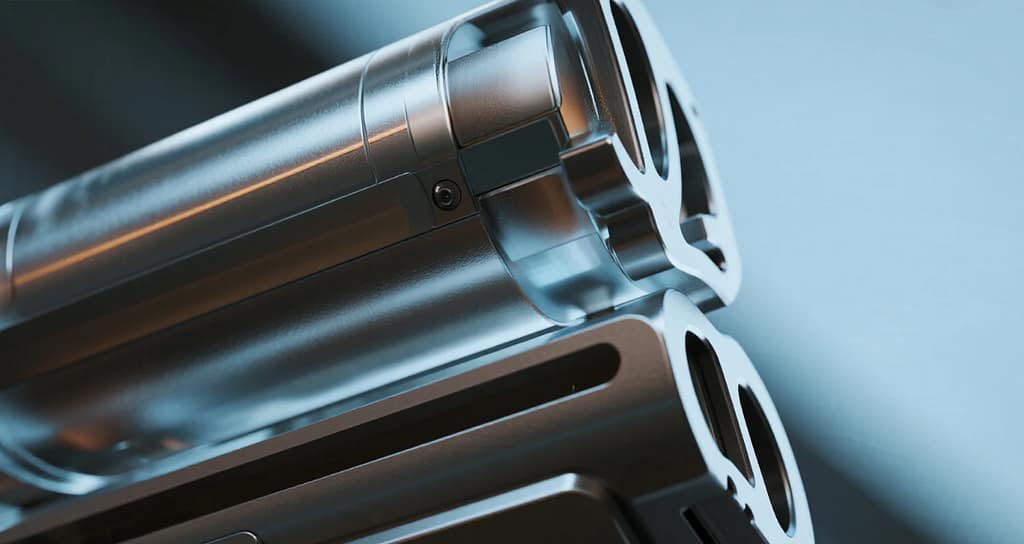In the world of high-performance products and precision components, choosing the right material is only half the battle; selecting the optimal surface finish is equally critical. For aluminum parts, a superior solution often lies in anodized aluminum. This electrochemical process enhances aluminum’s natural properties, transforming its surface into a durable, corrosion-resistant, and aesthetically pleasing finish. It’s not merely a coating; it is an integral part of the metal itself. This article will delve into the intricacies of anodized aluminum, exploring its fundamental principles, unique advantages, and its indispensable role in the creation of sophisticated industrial models. For businesses, like CAPtec, that require highly durable, aesthetically consistent, and precise aluminum components for their prototypes or end-use products, understanding this versatile finishing technique is crucial for unlocking design potential and ensuring long-term product integrity.
Understanding Anodized Aluminum: More Than Just a Coating

At its essence, anodized aluminum results from an electrolytic passivation process that converts the metal surface into a durable, anodic oxide finish. Unlike paints or plating that simply coat the surface, anodizing chemically integrates the oxide layer with the underlying aluminum substrate. This creates a highly uniform, porous structure that can be dyed in various colors and then sealed for enhanced protection. The resulting finish is exceptionally hard, resistant to corrosion, and maintains aluminum’s lightweight properties. This unique combination of benefits makes anodized aluminum a preferred choice across numerous industries, from aerospace and automotive to consumer electronics and architectural applications.
The Electrochemical Transformation: How Anodized Aluminum is Made
Creating anodized aluminum involves a series of carefully controlled steps, each contributing to the final finish’s quality, durability, and aesthetic appeal:
1. Meticulous Cleaning and Preparation
Before anodizing, the aluminum part undergoes thorough cleaning to remove any oils, dirt, or existing oxides. This preparation is absolutely critical; even the smallest surface imperfection or contaminant can lead to an uneven or flawed anodic layer. Specialized cleaning solutions ensure a pristine surface, ready for the electrochemical process.
2. The Anodizing Bath: Controlled Oxidation
The clean aluminum part then serves as the anode (positive electrode) in an electrolytic cell, immersed in an electrolyte solution (typically sulfuric acid, but other acids are used for different types of anodizing). A cathode (negative electrode) is also placed in the bath. When an electric current passes through the solution, oxygen ions are released from the electrolyte and combine with the aluminum atoms on the part’s surface. This controlled oxidation process forms a layer of aluminum oxide. Unlike naturally occurring aluminum oxide, which is thin and somewhat irregular, the anodized layer is thick, uniform, and precisely controllable.
3. Pore Formation and Layer Growth
As the anodic layer forms, it develops a highly ordered, porous structure. These microscopic pores extend perpendicularly from the surface into the aluminum. The thickness of this porous layer is directly controlled by the voltage, current density, and duration of the anodizing process. Thicker layers generally provide greater wear and corrosion resistance. Different types of anodizing processes (e.g., Type II for conventional, Type III or “hardcoat” for thicker, harder layers) yield varying pore structures and layer thicknesses, tailored to specific performance requirements.
4. Coloring (Optional): Infusing Vibrancy
One of the distinct advantages of anodized aluminum is its ability to absorb dyes. After the anodic layer is formed and while its pores are still open, the part can be immersed in a coloring bath. Organic or inorganic dyes penetrate the porous structure, offering a vast spectrum of vibrant, UV-stable colors. Alternatively, electrolytic coloring (two-step anodizing) can be used, where metal salts are deposited into the pores for more durable, often metallic-looking colors. This step is optional; natural anodized aluminum has a clear, silvery-metallic appearance.
5. Sealing: Locking in Protection and Color
The final and arguably most crucial step is sealing. If the pores are left open, they can absorb stains or pollutants, and the anodic layer’s corrosion resistance will be compromised. Sealing effectively closes these pores, enhancing the anodized aluminum’s corrosion resistance, wear resistance, and color retention. Sealing methods include hot water hydration, nickel acetate, or specific chemical seals, each offering different performance characteristics. Proper sealing ensures the long-term integrity and aesthetic appeal of the finish.
The Compelling Advantages of Anodized Aluminum
For businesses and designers requiring high-performance aluminum components, selecting anodized aluminum offers a multitude of compelling benefits that significantly enhance product quality, durability, and aesthetic appeal.
Enhanced Corrosion and Wear Resistance
The primary functional benefit of anodized aluminum is its significantly improved resistance to corrosion and wear compared to raw aluminum. The anodic oxide layer is much harder and more durable than the naturally occurring oxide layer. This makes anodized parts highly resistant to scratches, abrasions, and various environmental factors like salt spray, UV radiation, and many common chemicals. For products exposed to harsh conditions or frequent handling, this enhanced durability directly translates to a longer service life and sustained performance.
Superior Aesthetic Appeal with Color Options
Anodized aluminum offers a clean, sophisticated, and modern appearance. Beyond its inherent metallic luster, the ability to absorb dyes means manufacturers can achieve a wide array of stable, vibrant, and deep colors without the need for paints or coatings. These colors are integrated within the oxide layer, making them highly resistant to chipping, peeling, or fading. This aesthetic versatility allows for strong brand identity, product differentiation, and high-quality visual presentation, critical for consumer and industrial products alike.
Excellent Electrical Insulation and Thermal Conductivity
The aluminum oxide layer formed during anodizing is an excellent electrical insulator. This property is valuable for applications where electrical isolation is required without sacrificing aluminum’s thermal conductivity. While the anodic layer itself is insulative, the underlying aluminum retains its ability to conduct heat efficiently, making anodized aluminum suitable for components that need to dissipate heat while remaining electrically isolated.
Lightweight with High Strength-to-Weight Ratio
Anodizing adds minimal weight to the aluminum part, preserving its inherent lightweight advantage. This is particularly crucial in industries like aerospace, automotive, and portable electronics where every gram matters. Simultaneously, the process enhances the surface hardness and durability, offering a remarkable strength-to-weight ratio for components that need to be both light and robust.
Environmentally Friendly Process
Compared to many other metal finishing processes, anodizing is considered relatively environmentally friendly. The primary chemicals used are often reusable, and the byproducts are manageable. It does not involve heavy metals like chromium or lead, making it a safer and more sustainable choice for finishing operations. This aligns with modern environmental regulations and corporate responsibility.
The Pivotal Role of Anodized Aluminum in Precision Industrial Models

For companies like CAPtec (https://captecprecision.com/) that provide precision industrial model services, anodized aluminum plays a surprisingly vital and increasingly sophisticated role. While models might not face the same extreme conditions as final production parts, the aesthetic, tactile, and dimensional qualities conveyed by anodizing are profoundly important.
High-Fidelity Visual and Tactile Representation
Precision industrial models often serve as crucial tools for design reviews, marketing presentations, and ergonomic testing. The ability to create models with anodized aluminum means they can precisely mimic the look and feel of the final production part. This includes accurate color representation, a smooth yet robust surface texture, and the characteristic metallic sheen that signals quality. This high-fidelity visual and tactile representation is indispensable for truly immersing stakeholders in the product experience, gathering accurate feedback, and making informed design decisions early in the process.
Durability for Handling and Repeated Use
Industrial models, particularly those used for frequent demonstrations, trade shows, or hands-on testing, often endure significant handling and potential wear. Anodized aluminum provides the necessary surface hardness and scratch resistance to ensure these models maintain their pristine appearance and structural integrity over time. This enhanced durability ensures the models remain professional and presentable throughout their lifecycle, reflecting positively on the product they represent.
Dimensional Stability and Precision Aesthetics
The anodizing process adds a controlled, uniform layer to the aluminum part. When working with precision industrial models, maintaining exact dimensions is critical. Experienced anodizing providers understand how to control layer thickness to ensure the final model meets precise dimensional specifications. Furthermore, the consistent color and finish across multiple parts (e.g., an assembly with several anodized components) ensure aesthetic precision, which is vital for high-quality industrial models. This attention to detail reflects the quality of the actual product being represented.
Streamlining Design Validation and Prototyping
By enabling engineers to produce prototypes with the final intended finish, anodized aluminum streamlines the design validation process. Designers can evaluate not just the form and fit, but also the aesthetic impact and tactile experience of the product with its target finish. This reduces the need for multiple finishing iterations later in the development cycle, saving time and cost. It helps answer critical questions about user perception and product appeal before committing to mass production.
Choosing Your Ideal Partner for Anodized Aluminum Services

Selecting the right provider for anodized aluminum services is a pivotal decision for the success of any project involving aluminum parts, particularly for precision industrial models where aesthetics and durability are paramount. Companies like CAPtec (https://captecprecision.com/) embody these crucial characteristics.
Deep Expertise and Process Control
Look for a service provider with extensive experience in various types of anodized aluminum (e.g., Type II, Type III/Hardcoat, specialized coloring processes). Their deep technical knowledge of metallurgy, electrolyte chemistry, current density control, and sealing methods is essential for achieving consistent, high-quality results.
Advanced Equipment and Quality Assurance
Ensure the service utilizes modern anodizing lines with precise process control, automated handling systems, and sophisticated quality control measures (e.g., coating thickness gauges, color spectrophotometers, corrosion testing). Adherence to industry standards (e.g., MIL-A-8625 for military specifications) is a strong indicator of their capabilities and commitment to excellence.
Wide Range of Color Options and Finishes
If aesthetics are crucial, verify their ability to provide the specific colors, gloss levels, and surface textures you require. Some providers specialize in particular finishes or offer a broader palette, allowing for greater design flexibility.
Collaborative Approach and Technical Support
An ideal partner offers clear communication channels and works collaboratively with your design and engineering teams. Their willingness to provide technical advice on design for anodizing, material selection, and process optimization ensures the best possible outcome for your parts.
The Future Trajectory of Anodized Aluminum
The field of anodized aluminum continues to evolve, driven by advancements in material science, environmental regulations, and consumer demands for ever-improving aesthetics and performance. We can anticipate further developments in eco-friendly anodizing processes that reduce chemical waste, new coloring techniques that offer wider ranges and greater UV stability, and enhanced sealing methods for even greater corrosion and wear resistance. Integration with smart manufacturing practices, including real-time monitoring and AI-driven process optimization, will also lead to greater consistency and efficiency. For precision industrial models, these innovations mean even more realistic, durable, and aesthetically appealing prototypes that perfectly represent the final product, solidifying anodized aluminum‘s role as a leading surface finishing solution.
Conclusion
Anodized aluminum is far more than a mere surface treatment; it is a sophisticated electrochemical process that transforms aluminum into a highly durable, corrosion-resistant, and aesthetically versatile material. For businesses focused on precision industrial model services, leveraging the power of anodized aluminum offers a distinct and significant advantage. It enables the creation of prototypes and components with unparalleled visual and tactile fidelity, enhanced durability for rigorous handling, and precise aesthetic consistency. By understanding the profound capabilities and benefits of anodized aluminum, companies can unlock new design possibilities, ensure product longevity, and elevate the perceived quality of their offerings in a competitive market. It truly represents a blend of science, engineering, and artistry in modern manufacturing.
FAQ
Q1: What is the main difference between anodized aluminum and painted aluminum?
A1: Anodized aluminum forms an integral oxide layer that is chemically bonded to the aluminum surface, making it highly durable and resistant to chipping/peeling. Paint is an applied coating that sits on top of the surface and can chip or scratch more easily.
Q2: What benefits does anodized aluminum offer for industrial models?
A2: For industrial models, anodized aluminum provides high-fidelity visual and tactile representation, enhanced durability for handling and repeated use, and ensures dimensional stability and precise aesthetic consistency, making models more realistic and robust.
Q3: Is anodized aluminum resistant to scratches?
Q3: Yes, the anodic oxide layer formed on anodized aluminum is significantly harder than raw aluminum, providing greatly improved scratch and abrasion resistance. Hardcoat (Type III) anodizing offers the highest level of wear resistance.
Q4: Can anodized aluminum come in different colors?
Q4: Yes, one of the key advantages of anodized aluminum is its ability to be dyed in a vast array of vibrant and stable colors. The porous nature of the oxide layer allows it to absorb organic or inorganic dyes before sealing.
Q5: Is the anodizing process environmentally friendly?
Q5: Compared to many other metal finishing processes, anodizing is considered relatively environmentally friendly. It avoids heavy metals and many processes are designed for chemical reusability and manageable waste streams.
Q6: Does anodizing add significant weight to aluminum parts?
Q6: No, anodizing adds only a minimal amount of weight to the aluminum part. This preserves aluminum’s inherent lightweight advantage while significantly enhancing its surface properties.
Q7: How does the sealing step affect anodized aluminum?
Q7: Sealing is crucial as it closes the pores of the anodic layer. This significantly enhances the anodized aluminum‘s corrosion resistance, wear resistance, and color retention, ensuring long-term durability and appearance.